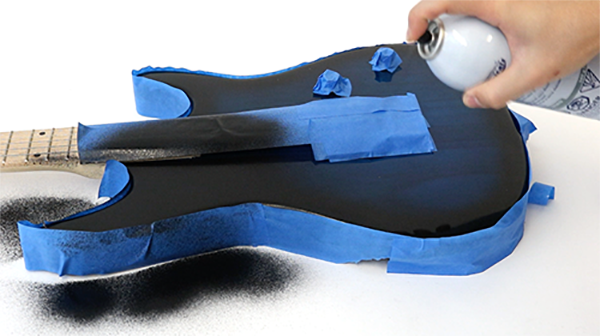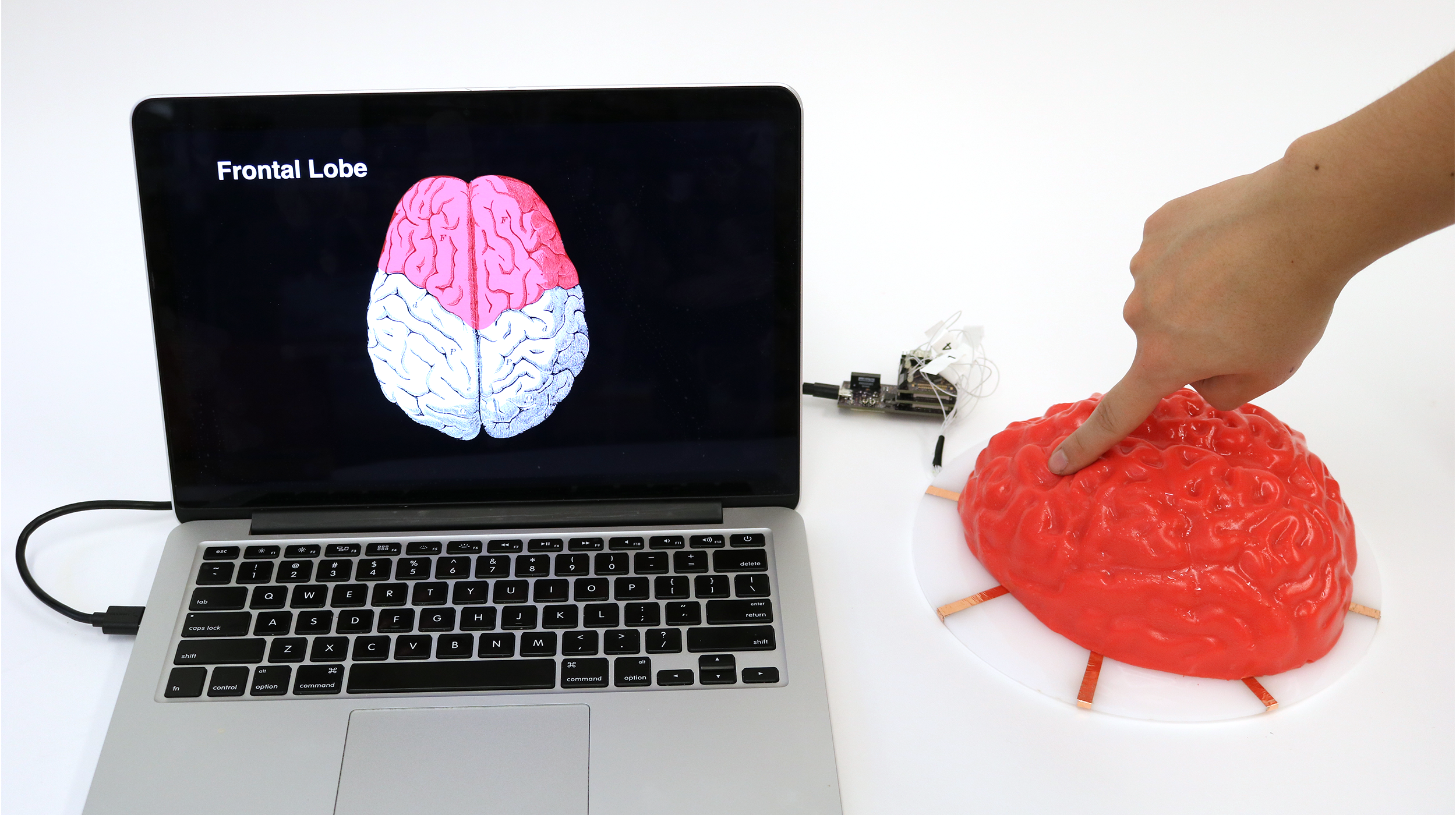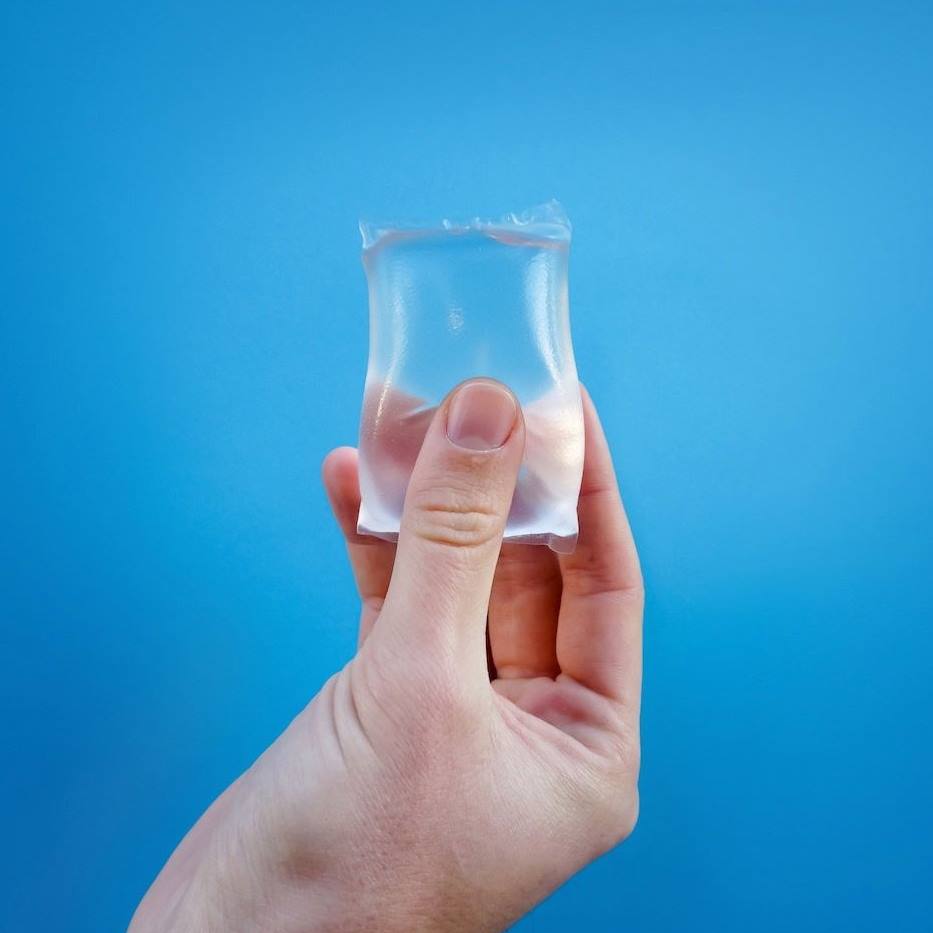
As Greek mythology has it, King Midas could turn any object into gold though a simple touch. A group of researchers at Carnegie Mellon University (CMU) just might have one-upped King Midas through an innovative, low-cost technique that uses a special paint to “spray on” touch-sensitive screens to three-dimensional objects of various shapes and sizes.
Dubbed “Electrick” by its CMU inventors, the paint provides a tangible answer to what would otherwise seem like a purely mythical (and truly fantastical) notion: What if you could turn practically anything into a touchscreen?
Putting the “Trick” in Electrick

A crucial key to Electrick lies in an electronics principle called “shunting,” which is at work in most touchscreens.
Shunting basically provides the means for electricity to bypass or redirect around an obstacle. So when you press on an electrically conductive surface, the voltage dips right where your finger touches it. In essence, you create the “obstacle” the current has to flow around, which pinpoints precisely where the interruption occurred in an electric field.
Pairing that kind of pinpointing process (“electric field tomography,” in this case) with an electrically conductive material is what let CMU researchers make Electrick really click. They attached sensing electrodes to everyday objects (ranging from a small toy to a large piece of sheetrock) coated with a conductive material, and then passed a current through the surface of those objects. Thanks to an interface that ran to laptop or mobile device, each object—however large or small, however basic or irregularly shaped—essentially became a functional touchscreen.
“For the first time, we’ve been able to take a can of spray paint and put a touch screen on almost anything,” explained Chris Harrison, head of CMU’s Future Interfaces Group and assistant professor in the university’s Human-Computer Interaction Institute (HCII), in a news release issued by the university.
Today, the only other way to turn oddly shaped, oversized physical objects into touchscreens is through the use of cameras, which have three key drawbacks: Their vision can be blocked, privacy issues can easily arise, and the systems are so costly that only well-funded research labs can put them to work.
That’s why Midas himself would probably appreciate (if not envy) the economics of Electrick: Since the simple conductive material that Harrison’s team used could be spray painted or rolled on an object, the technique suddenly becomes a much more affordable option for mass-scale application.
Some Truly Electrifying Possibilities
The CMU team also discovered that their technique could be applied to solid materials, meaning it can be integrated into popular milling, molding and stamping processes.
A common, electrically conductive film like Velostat, for example, could be laminated to a thermo-formable sheet and essentially “heat wrapped” around an everyday object. In a more complex (and arguably more “Wow!”) application, Electrick can be integrated with carbon-loaded ABS, a common plastic used in 3D printing. So a prototype of game controller, for instance, could be transformed from a static chunk of plastic (one that “looks like the real thing”) into a highly functional interactive demo tool (one that “behaves like the real thing”).

A video released by the CMU team provides an eye-opening preview at how the technology might be practically applied, including:
- Applying common controls—like volume or reverb—directly onto the surface of instruments, such as the body of an electric guitar
- Making children’s toys truly interactive, where touching the toy in distinct spots triggers content to appear on an attached laptop or tablet computer
- Amplifying smart-home features, where, for example, simply tapping a wall in your home turns on the lights, while sliding your hand up and down in the same spot of the wall would act as a de facto dimmer switch
- Creating next-generation, touch-sensitive teaching tools—like a lifelike, gelatinous brain that has a pliable, conductive film wrapped around it
The implications for future applications are extraordinary. If the everyday objects you see around you while you read this—like your desk, your chair or your mobile phone case—can be cost-effectively transformed into interactive surfaces, those same objects could take on entirely new levels of utility and value.
King Midas’ legend suggests he was able to turn living things (like food … and, in an unfortunate twist of fate, his own daughter) into motionless, solid gold objects. With Electrick, users have the exact opposite potential—to transform static objects into smartly active ones. What could you do with this technology?
The Innovation, Inspiration & Ideas blog was created to share stories and profiles of companies, products and individuals creating innovation in business through inventive material solutions. For more information on why we launched it, read our blog introduction.
Also in Industry Inspiration:

Using Carbon Dioxide to Make Plastics
in Industry InspirationScientists at Rutgers have developed catalysts that can convert carbon dioxide into plastics, resins, fabrics and more. Since carbon dioxide has been identified as a major cause of… Read More

Edible Water Bottles: the next big thing?
in Industry InspirationEdible water bottles could be in your future thanks to London-based startup Skipping Rocks Lab. Their first product, Ooho, makes you rethink “water on the go.” The idea behind Ooho… Read More
